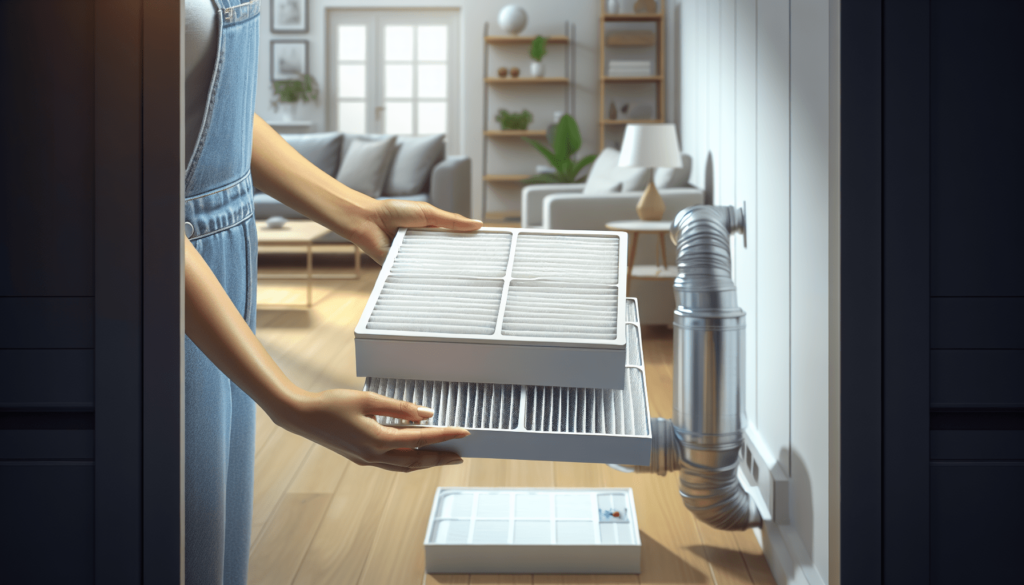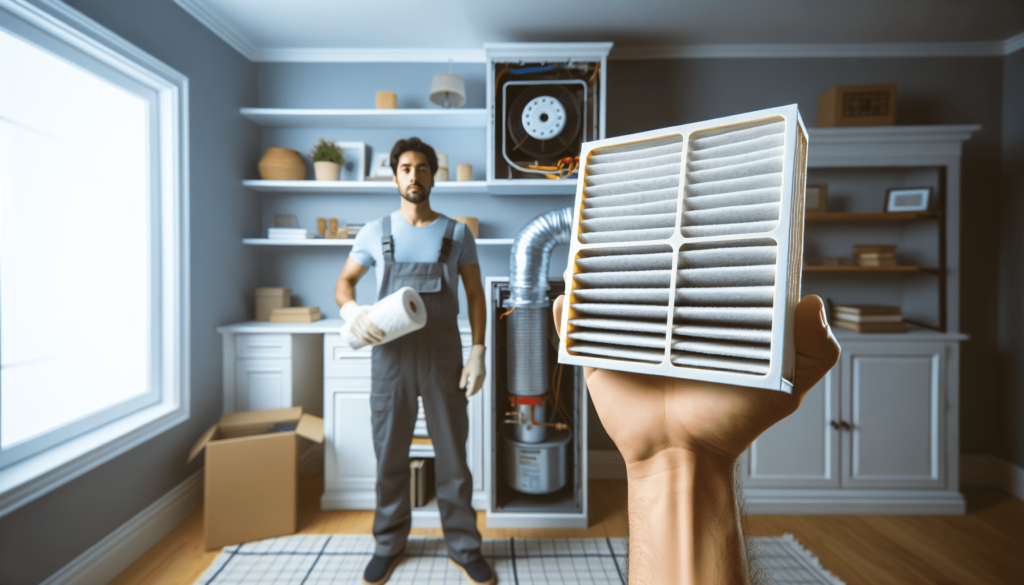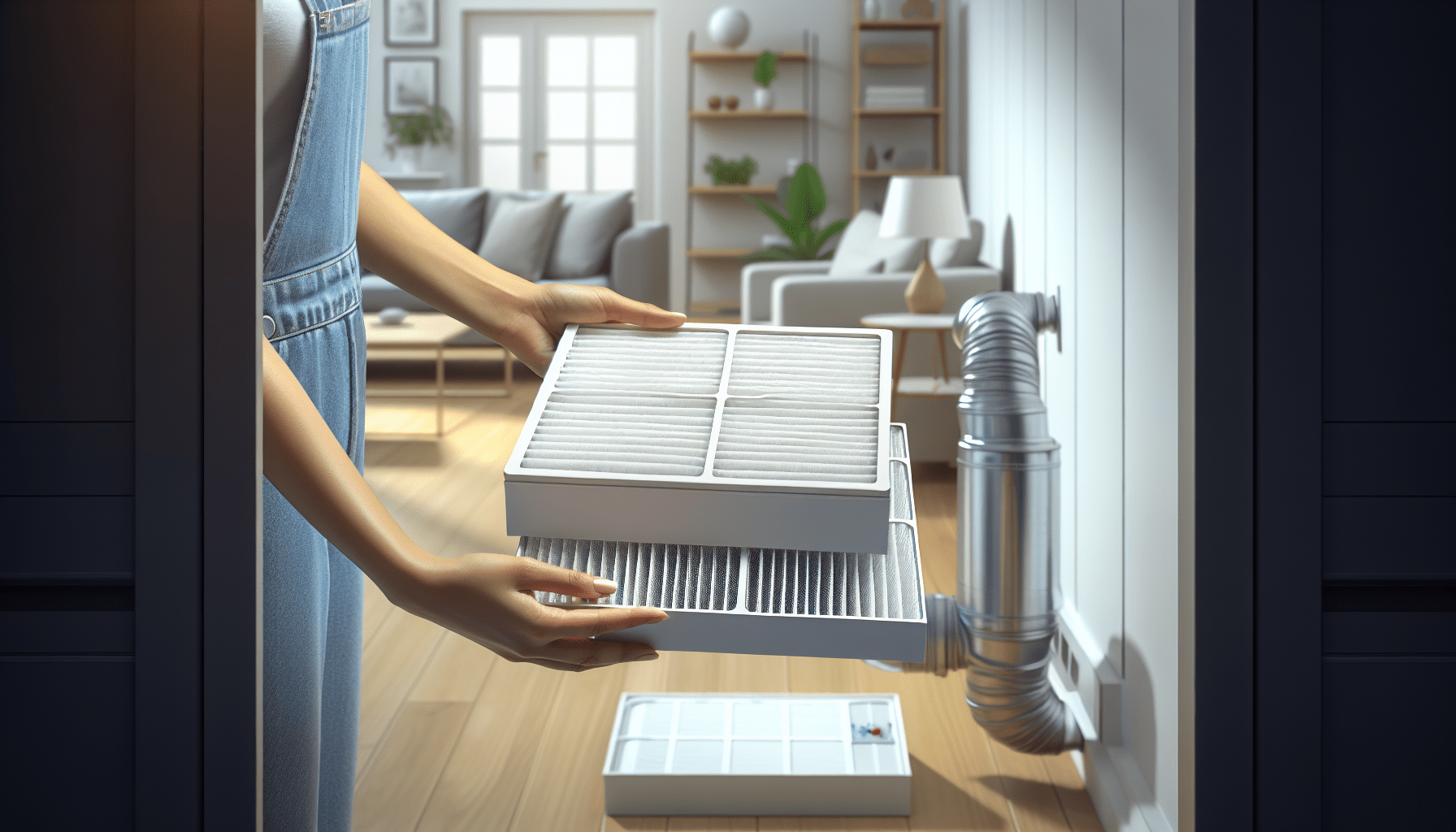Have you ever wondered how to make your home a cleaner and healthier space, especially when it comes to the air you breathe? Allergens in your home, particularly those circulating through your HVAC system, can affect your well-being more than you might think. If you or your loved ones are suffering from allergies, asthma, or respiratory issues, taking steps to reduce allergens in your HVAC system can make a notable difference.

Understanding Allergens and Your HVAC System
What Are Allergens?
Allergens are substances that can cause allergic reactions, predominantly by entering the body through inhalation. Common household allergens include pollen, pet dander, dust mites, mold spores, and even some types of bacteria. These particles are often so small that they get easily circulated through your HVAC system, spreading throughout your home.
How Allergens Affect Health
Exposure to allergens can lead to a variety of health issues. Common symptoms include sneezing, coughing, itchy eyes, and a runny nose. For those with asthma or other respiratory conditions, allergens can trigger severe reactions, making it imperative to maintain high indoor air quality.
The Role of Your HVAC System
Your HVAC system plays a crucial role in maintaining indoor comfort by heating, ventilating, and air-conditioning your home. However, it can also become a conduit for allergens. Because HVAC systems continuously circulate air, any allergens present can quickly spread throughout your home, exacerbating health issues.
Steps to Reduce Allergens in Your HVAC System
Regular Maintenance
One of the most effective ways to reduce allergens in your HVAC system is through regular maintenance. Both professional servicing and do-it-yourself tasks are necessary for keeping the system running efficiently and cleanly.
Professional Inspection
Hire a qualified HVAC technician for an annual inspection to check for any inefficiencies or issues within your system. They can clean hard-to-reach areas and make necessary repairs, ensuring that allergens don’t accumulate.
DIY Maintenance
Simple maintenance tasks can go a long way. Replace your HVAC filters regularly—every 1 to 3 months, depending on the type of filter and usage. Clean the air ducts periodically to prevent the build-up of dust and other allergens.
Upgrade Your Filters
Using high-quality filters is crucial for capturing smaller particles. Filters are classified by their Minimum Efficiency Reporting Value (MERV) rating. The higher the MERV rating, the more effective the filter.
Types of Filters
| Filter Type | MERV Rating | Effectiveness |
|---|---|---|
| Fiberglass | 1-4 | Low (least effective) |
| Pleated | 5-8 | Moderate |
| High-Efficiency | 9-12 | High (captures smaller particles) |
| HEPA | 13-16 | Very High (captures most allergens) |
For best results, consider using High-Efficiency or HEPA filters, especially if you or others in your home suffer from allergies or asthma.
Utilize Air Purifiers
In addition to high-quality filters, using air purifiers can greatly reduce allergens in your home. Air purifiers help to capture particles that might otherwise escape the HVAC filter.
Room Air Purifiers
Place room air purifiers in areas where you spend the most time, such as bedrooms and living rooms. These devices can effectively reduce allergens in specific areas of your home.
Whole-House Air Purifiers
For comprehensive coverage, consider installing a whole-house air purifier that integrates with your HVAC system. These purifiers work in conjunction with your HVAC system to filter air throughout your entire home.
Improve Ventilation
Proper ventilation is essential for maintaining good indoor air quality. A well-ventilated home allows fresh air to enter and stale, allergen-laden air to exit.
Natural Ventilation
Open windows and doors when possible to allow fresh air to circulate. This can help reduce the concentration of indoor allergens.
Mechanical Ventilation
Use exhaust fans in bathrooms and kitchens to remove moisture and pollutants. Consider installing an energy recovery ventilator (ERV) or heat recovery ventilator (HRV) to improve air exchange without sacrificing energy efficiency.
Control Humidity Levels
Maintaining appropriate humidity levels is important for mitigating allergens, particularly mold and dust mites, which thrive in high humidity.
Dehumidifiers
Use dehumidifiers to control moisture levels, especially in basements, bathrooms, and other high-humidity areas. Aim to keep indoor humidity levels between 30% and 50%.
Humidity Monitors
Invest in a humidity monitor to keep track of the levels in your home, ensuring they remain within the optimal range.
Keep Your Home Clean
A clean home is less likely to harbor allergens. Regular cleaning practices such as vacuuming, dusting, and washing bedding can significantly reduce the allergen load.
Vacuuming
Use a vacuum cleaner with a HEPA filter to effectively capture dust, pet dander, and other small particles. Vacuum carpets, rugs, and upholstered furniture regularly.
Dusting
Dust surfaces with a damp cloth to prevent particles from becoming airborne. Pay special attention to window sills, baseboards, and other often-overlooked areas.
Washing Bedding
Wash bedding, curtains, and other linens frequently in hot water to kill dust mites and remove allergens.
Special Considerations
Pet Allergens
Pets can be a significant source of allergens. Pet hair can clog filters, and dander can easily become airborne.
Pet Baths and Grooming
Regularly bathe and groom your pets to reduce the amount of dander they shed. Consider creating pet-free zones, particularly in bedrooms.
Air Filtration and Ventilation
Use HEPA filters and proper ventilation to minimize the impact of pet allergens.
Seasonal Allergies
Seasonal changes can exacerbate allergies due to varying levels of pollen and other outdoor allergens.
Close Windows During High Pollen Seasons
Keep windows and doors closed during high pollen seasons to prevent allergens from entering.
Use Air Conditioning
Use your HVAC system’s air conditioning to help filter and cool the indoor air.
Mold and Mildew
Mold and mildew can develop in damp environments and pose serious health risks.
Inspection and Cleaning
Regularly inspect areas prone to moisture, such as basements and bathrooms, and clean any mold or mildew promptly.
Mold-Resistant Building Materials
Consider using mold-resistant paint, drywall, and other building materials in moisture-prone areas.
Additional Tips for Maintaining a Healthy Home Environment
Indoor Plants
Indoor plants can improve air quality, but they can also trigger allergies in some individuals. Choose low-allergen plants such as spider plants, peace lilies, and aloe vera.
Cooking and Heating
Use exhaust fans while cooking and ensure your heating sources are vented properly to reduce indoor air pollutants.
Minimizing Chemical Pollutants
Be cautious of the cleaning and personal care products you use, as they can contribute to indoor air pollution. Opt for natural and fragrance-free options when possible.

Building Healthy Habits
Consistency is key in maintaining a low-allergen home environment. By integrating these practices into your routine, you can significantly reduce allergen levels and improve your overall health and comfort.
Regular Schedule
Create a regular schedule for changing filters, cleaning, and performing other maintenance tasks. Stick to this schedule to ensure your HVAC system and home remain as allergen-free as possible.
Educate Household Members
Inform all household members about the importance of these measures. Encourage everyone to participate in maintaining a clean and healthy environment.
Stay Informed
Keep up-to-date with the latest information and technologies related to air quality and allergens. New products and methods are continually being developed to help you maintain a healthier home.
Conclusion
Reducing allergens in your home HVAC system is a multifaceted approach that involves regular maintenance, high-quality filtration, proper ventilation, and good housekeeping practices. By taking these steps, you can create a healthier living environment for you and your loved ones. Small changes can make a significant impact, leading to better air quality and better health. Breathe easy knowing you’ve done your part in reducing allergens and promoting a more comfortable, clean home.
By implementing these tips and committing to regular maintenance and upgrades, you can significantly reduce the number of allergens circulating through your HVAC system and ultimately throughout your home. This will help you and your family enjoy a more comfortable, healthier living environment.
